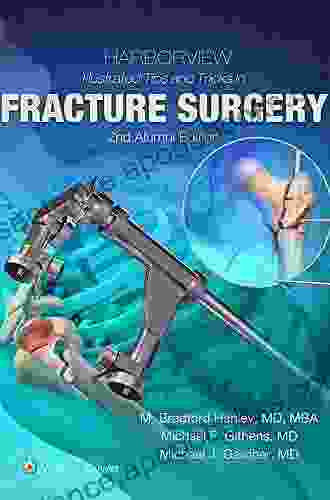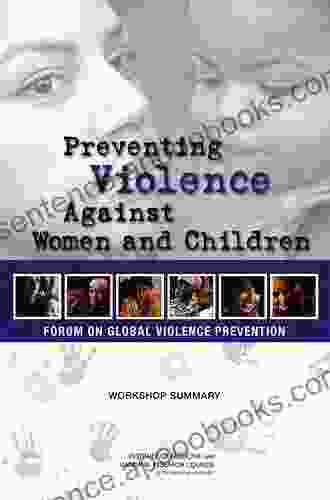Protecting Our Precious Children: A Comprehensive Guide to Preventing Child Maltreatment

Child maltreatment is a serious and prevalent issue that affects millions of children worldwide. It is a complex problem with far-reaching consequences, not only for the individual child but also for their families, communities, and society as a whole.
This comprehensive guide provides a thorough understanding of child maltreatment, its risk factors, and evidence-based strategies for prevention. It is written for a wide audience, including parents, educators, social workers, healthcare professionals, law enforcement officers, policymakers, and anyone else who is committed to protecting children from harm.
4.7 out of 5
| Language | : | English |
| File size | : | 1691 KB |
| Text-to-Speech | : | Enabled |
| Print length | : | 1173 pages |
| Screen Reader | : | Supported |
Chapter 1: Understanding Child Maltreatment
This chapter provides an overview of child maltreatment, including its different types, signs and symptoms, and the short- and long-term consequences for children.
Types of Child Maltreatment
- Physical abuse: Any non-accidental injury inflicted on a child by an adult or older child.
- Sexual abuse: Any sexual contact between an adult and a child, or between an older child and a younger child.
- Neglect: Failure to provide a child with the basic necessities of life, such as food, clothing, shelter, or medical care.
- Emotional abuse: Any pattern of behavior that damages a child's self-esteem or emotional well-being, such as belittling, isolating, or terrorizing.
Signs and Symptoms of Child Maltreatment
The signs and symptoms of child maltreatment can vary depending on the type of abuse and the child's age and developmental stage. However, some common signs and symptoms include:
- Physical injuries, such as bruises, cuts, burns, or fractures.
- Behavioral changes, such as withdrawal, aggression, or difficulty sleeping.
- Emotional distress, such as anxiety, depression, or low self-esteem.
- Academic problems, such as difficulty concentrating or poor grades.
- Health problems, such as headaches, stomachaches, or infections.
Consequences of Child Maltreatment
Child maltreatment can have devastating consequences for children, both in the short term and the long term. Short-term consequences may include physical injuries, emotional distress, and academic problems. Long-term consequences may include mental health problems, substance abuse, criminal behavior, and chronic health conditions.
Chapter 2: Risk Factors for Child Maltreatment
There are a number of risk factors that can increase a child's vulnerability to maltreatment. These risk factors can be divided into three categories: child-related factors, parent-related factors, and environmental factors.
Child-Related Risk Factors
- Age: Children under the age of 5 are at the highest risk for maltreatment.
- Gender: Girls are more likely to be sexually abused than boys.
- Disability: Children with disabilities are more likely to be neglected or abused.
- Behavioral problems: Children with behavioral problems, such as hyperactivity or aggression, are more likely to be maltreated.
Parent-Related Risk Factors
- Young age: Parents who are under the age of 25 are more likely to maltreat their children.
- Single parenthood: Single parents are more likely to experience stress and financial difficulties, which can increase the risk of maltreatment.
- History of abuse: Parents who have been abused as children are more likely to abuse their own children.
- Substance abuse: Parents who abuse alcohol or drugs are more likely to neglect or abuse their children.
- Mental health problems: Parents with mental health problems, such as depression or anxiety, are more likely to maltreat their children.
Environmental Risk Factors
- Poverty: Children living in poverty are more likely to be maltreated.
- Social isolation: Families that live in isolated communities or have few social supports are more likely to experience child maltreatment.
- Community violence: Children living in communities with high levels of violence are more likely to be maltreated.
- Lack of access to resources: Families that lack access to resources, such as affordable housing, childcare, and healthcare, are more likely to experience child maltreatment.
Chapter 3: Evidence-Based Prevention Strategies
There are a number of evidence-based strategies that can be used to prevent child maltreatment. These strategies can be divided into two broad categories: primary prevention and secondary prevention.
Primary Prevention
Primary prevention strategies are designed to reduce the risk of child maltreatment before it occurs. These strategies typically target the general population and aim to create a supportive environment for children and families.
- Parent education and support programs: These programs provide parents with information and skills to help them raise their children in a safe and healthy environment.
- Home visiting programs: These programs provide support to families with young children, particularly those who are experiencing challenges.
- Community outreach programs: These programs aim to connect families with resources and support in their community.
- Public awareness campaigns: These campaigns aim to raise awareness of child maltreatment and encourage people to report suspected cases.
Secondary Prevention
Secondary prevention strategies are designed to identify and respond to child maltreatment after it has occurred. These strategies typically target families who are at risk for maltreatment or who have already experienced maltreatment.
- Child protective services: These agencies investigate reports of child maltreatment and provide support to families.
- Foster care: This is a temporary placement for children who have been removed from their homes due to maltreatment.
- Treatment programs: These programs provide therapy and other services to children and families who have experienced maltreatment.
- Multidisciplinary teams: These teams bring together professionals from different disciplines to coordinate services for children and families who have experienced maltreatment.
4.7 out of 5
| Language | : | English |
| File size | : | 1691 KB |
| Text-to-Speech | : | Enabled |
| Print length | : | 1173 pages |
| Screen Reader | : | Supported |
Do you want to contribute by writing guest posts on this blog?
Please contact us and send us a resume of previous articles that you have written.
 Book
Book Novel
Novel Page
Page Chapter
Chapter Text
Text Story
Story Genre
Genre Reader
Reader Library
Library Paperback
Paperback E-book
E-book Magazine
Magazine Newspaper
Newspaper Paragraph
Paragraph Sentence
Sentence Bookmark
Bookmark Shelf
Shelf Glossary
Glossary Bibliography
Bibliography Foreword
Foreword Preface
Preface Synopsis
Synopsis Annotation
Annotation Footnote
Footnote Manuscript
Manuscript Scroll
Scroll Codex
Codex Tome
Tome Bestseller
Bestseller Classics
Classics Library card
Library card Narrative
Narrative Biography
Biography Autobiography
Autobiography Memoir
Memoir Reference
Reference Encyclopedia
Encyclopedia David Hoffman
David Hoffman Noora Lori
Noora Lori Barry A Crouch
Barry A Crouch Jody Houser
Jody Houser Angelo Codevilla
Angelo Codevilla Todd Shepard
Todd Shepard Mark Callanan
Mark Callanan Emma Jones
Emma Jones Evan Hirschelman
Evan Hirschelman Emma Broughton
Emma Broughton Charles Derber
Charles Derber Emily Robert
Emily Robert W Somerset Maugham
W Somerset Maugham Elaine D Walsh
Elaine D Walsh Robert Graves
Robert Graves Emily Larkins
Emily Larkins Ellen Knightley
Ellen Knightley John Armstrong
John Armstrong Ellen Koskoff
Ellen Koskoff John O Hara
John O Hara
Light bulbAdvertise smarter! Our strategic ad space ensures maximum exposure. Reserve your spot today!

 Isaiah PriceAn Anthology of Contemporary North American Haiku: Unveiling the Essence of...
Isaiah PriceAn Anthology of Contemporary North American Haiku: Unveiling the Essence of...
 Walt WhitmanThe Last President of the 1900s: A Story of Power, Legacy, and the End of an...
Walt WhitmanThe Last President of the 1900s: A Story of Power, Legacy, and the End of an...
 Charles ReedUnlock Surgical Precision: Dive into Harborview's Illustrated Tips and Tricks...
Charles ReedUnlock Surgical Precision: Dive into Harborview's Illustrated Tips and Tricks... Patrick RothfussFollow ·16.6k
Patrick RothfussFollow ·16.6k Edwin CoxFollow ·4.4k
Edwin CoxFollow ·4.4k Jim CoxFollow ·10.6k
Jim CoxFollow ·10.6k Esteban CoxFollow ·13.4k
Esteban CoxFollow ·13.4k Jessie CoxFollow ·5.7k
Jessie CoxFollow ·5.7k Miguel NelsonFollow ·17.9k
Miguel NelsonFollow ·17.9k Bryson HayesFollow ·11.5k
Bryson HayesFollow ·11.5k Fredrick CoxFollow ·16.1k
Fredrick CoxFollow ·16.1k

 Julian Powell
Julian PowellShetland Pony: Comprehensive Coverage of All Aspects of...
The Shetland...

 Cason Cox
Cason CoxHow Anaesthetics Changed the World: A Medical Revolution...
Imagine a world where surgery is an...

 Harold Powell
Harold PowellUnleash Your Inner Songwriter: The Ultimate Guide for...
Calling all aspiring songwriters!...

 Nikolai Gogol
Nikolai GogolUnleash Your Artistic Potential: Quick Draw Anatomy for...
In the dynamic and visually...

 Tim Reed
Tim ReedThe Rock 'n' Roll Life of Legendary Sax Man Bobby Keys
The Rock 'n' Roll Life...

 Damon Hayes
Damon HayesMoney Management Activities for Youth: A Guide to...
In an era marked by rapidly...
4.7 out of 5
| Language | : | English |
| File size | : | 1691 KB |
| Text-to-Speech | : | Enabled |
| Print length | : | 1173 pages |
| Screen Reader | : | Supported |






